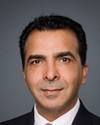Merci.
I want to thank you, members, for inviting me to appear today to contribute to your study on the readiness of the Canadian Forces.
I'm joined by my colleague, David Macdonald, who works both for the Canadian Centre for Policy Alternatives as an economist and for the Rideau Institute as a contributor and who wrote The Cost of 9/11, our recent report released last fall, which he will speak to after my remarks.
The Rideau Institute is a non-profit, non-partisan research, advocacy, and consulting group. We were founded in 2006. We specialize in international affairs and we are funded by more than 2,000 individual supporters, by commissioned research, and through our social enterprise, which provides consulting services to leading Canadian non-profit groups and trade unions. We do not receive government funding and our supporters do not receive tax deductions for their donations.
I would like to thank David Macdonald, Bill Robinson, Josh Libben, and Kathleen Aiken for their research contributions to our presentation today.
Your report is timely. More than a decade after 9/11—which was followed by such tremendous changes, growth, and heavy combat by our armed forces—the tide is shifting. In answer to the question you are considering, “Are they ready?”, one might answer “Yes, they are” or “No, they're not.” But I think the answer to the question is a question, which is “Ready for what?” Readiness is a measure against a need. What threats are there to Canada? What are the priorities of our foreign policy, to which the Department of National Defence is one contributor?
As you know, the United States has just announced a new direction for its armed forces, borne out of three factors, according to The New York Times: troubled government finances, the winding-down of wars in Iraq and Afghanistan, and a changing geopolitical environment. We're not exempt from these same factors, so such a review is also needed here in Canada, since we have our own financial challenges to address. Our Afghanistan combat mission has ended, and Osama bin Laden is dead.
As David Macdonald pointed out in The Cost of 9/11, in the last decade, military spending has increased dramatically. Military spending has nearly doubled: 90% in 10 years, or 48% if you adjust it for inflation. When you include other departments, Canada has devoted an additional $92 billion to national security spending over and above what we would have spent had 9/11 not happened and if defence spending had stayed at its then-level: in adjusted dollars, $69 billion.
Some charts were distributed, and I want to draw your attention to chart 1. You'll see that national defence spending has never been higher. Spending is more than $21 billion. In terms of real dollars, we are the sixth-highest spender among the 28 members of NATO and we're in the top 15 spenders globally. Despite a small decline last year, as you see on chart 1, the Department of National Defence is predicting further increases in accordance with the Canada First defence strategy.
I direct your attention to chart 2. Looking at defence spending since the end of the Second World War, when adjusted for inflation, our spending has never been higher, exceeding even the height of the Cold War, when we faced off against thousands of Soviet nuclear weapons and long-range bombers. Can we say we face a greater threat than that today? If not, should we continue spending like we do? The fact is that we are overspending on defence right now, and we lack a clear sense of how to know when enough is enough, when it's the right amount.
I direct you to chart number three in the package, which shows the division of government spending on various departments and transfers. This was provided by the Department of Finance. You can see that national defence now accounts for 7.9% of total government spending. However, when you only look at federal departmental spending as when it is crown corporations, defence is consuming one out of every four dollars available to you.
As Lieutenant-General Andrew Leslie pointed out in his CF transformation report, there is substantial room to find savings within the Department of National Defence. Every area of the government that has been asked to contribute in time of need to help our federal finances needs to make a contribution.
Many people I've heard from in the last few days—and more than 400 have sent ideas for this presentation—are worried that their pensions are at risk and social programs may erode. They certainly support a military capable of defending our sovereignty and contributing to international missions, particularly UN peacekeeping operations, but not at the expense of our finances and caring for people here at home. Since we're overspending on defence, social programs can be better protected through national defence spending reductions, while still making an international contribution.
The final chart is number four. It gives some new numbers that we're presenting for the first time today. MIR reports have indicated that the Department of National Defence may be asked for reductions in excess of the 5% or 10% that's been requested by the government from all departments. I think this is reasonable, because our examination of defence and government spending over the last decade shows that while government spending has increased by 40%, defence spending has increased by 60%. That is, defence spending has grown 1.5 times faster than government spending over the last ten years. In one year alone, as Colonel MacDonald pointed out, the defence budget grew by more than 12%.
It's clear that the commitments made in the Canada First defence strategy must be reviewed. Our allies are going through the same process. Many are questioning stealth-plated aircraft programs like the F-35, and Canada can do the same. As Professor Walter Dorn says—I think you're going to hear from him later in your further studies at the Canadian Forces College—there are hawks and there are doves, but what we need are more owls. We need to spend more wisely.
British Prime Minister David Cameron shared a bit of this wisdom in his speech to Parliament last year. I'm sure you were there. He asked you to look at Afghanistan and said that if we had put a fraction of our current military spending on Afghanistan into helping Afghanistan develop 15 or 20 years ago, just think what we might have been able to avoid over the last decade.
We can get into a debate about whether the financial burden borne by Canadians over the last ten years was warranted, but I think we should be asking ourselves if we want to continue spending at this high level. More importantly, what are our needs? Can we take action so that we're ready to meet our legitimate security needs and contribute on the international stage in a manner that Canadians want and support?
As Lieutenant-General Andrew Leslie pointed out in his report, if we're serious about the future--and we must be--the impact of reallocating thousands of people and billions of dollars from what we're doing now to what we want them to do to position us for tomorrow will require some dramatic changes.
Thank you, and I look forward to the question period.
I'll turn it over to my colleague, David Macdonald.




